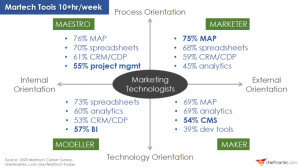— July 31, 2018

Free-Photos / Pixabay
No leader ever strives to build a low or average performing team. You aim to build a strong, capable, competent and, of course, a high performing team. However, what is a high performing team? Surely, it’s not a team that simply achieves their targets. It’s in fact, a team that works so well together and is so accurately aligned to the company’s purpose that the collective output of its team members can exponentially increase the company’s chances of success.
I’ve met many leaders through my practice and every one of them has expressed their desire to build a high-performance team. However, given the challenges of the age of acceleration, there’s no quick formula that can produce such teams. It takes effort, patience, and constant attention by exponential leaders to build high performing teams that can withstand the trials and turbulence of these testing times.
Building high performing teams on the basis of trust and shared values is a key foundation and starting point. From there, you’ll need to employ the following techniques which I’ve witnessed to have worked for many exponential leaders.
1. Be Clear on Your Intent
Before you go on trying to build high performing teams, take a look within and ask yourself “what are your intentions?” What are you really trying to achieve? You could go on at length with a strategy talk to charge up your team, however, they’ll just perceive it as marketing gimmickry. Do yourself and your team a favor and skip the nonsense. Just don’t go there.
If you’re seriously looking to build high performing teams you need to first build trust. A team that can trust you, your words and your intentions is one that’ll do whatever it takes to help you succeed because they’ll feel a part of it all. What you’re aiming for is to share your intent so that the vision can be shared between you and your team. Without a clear picture of where your intentions are leading you and your team, you’ll simply be going about business in a haphazard and wayward manner. You need structure and focus. And all that comes down to is a clear intent of what you’re trying to achieve.
2. Encourage Relationship Building
One of the most common traps that leaders fall into is where they start giving instructions and directing their teams on how to get work done. This is probably one of the most classic examples of how trust and relationships go south. In fact you can’t really build relationships when communication is one-way.
As an exponential leader your position really isn’t to tell people how to work. If you’re confident that you hired smart, intelligent and capable individuals, then start treating them as smart, intelligent and capable. You’re a coach, a mentor, a guide and a source of wisdom. Your team will get the work done, on their own. They don’t need someone to direct their moves. Build a relationship with your team that’s based on respect, encourages two-way communication and brimming with trust. With little intervention, your team will flourish into high performing teams.
3. Build and Maintain Trust
Are you a leader who keeps a hidden agenda from their team? Honestly, what is that going to achieve? You’ll be second guessing your team and lacking any faith in them. At the same time your team will be questioning your motives and probably not truly following you as well. In the end, you’re creating an explosive environment which can lead to the downfall of your company.
Building trust isn’t easy. Maintaining trust, however, is even harder. Trust, of course, starts with mutual respect and humility. If you’re thinking you’re better, smarter or more capable than your team members you’ll never be able to win their trust or appreciate them for who they are. Trust can be built and maintained if you’re consistently respecting each and every member of your team and valuing their contribution (and even just their presence).
4. Establish Team Ground Rules
Team ground rules are a great way to get everyone on board and contributing. Often in teams, you’ll have some individuals who speak out more than the others. It doesn’t necessarily mean that the quiet ones aren’t contributing enough. However, to really build high performing teams you need everyone to be on the same page and communicating as openly and freely as the other. Balance and equality is key here.
Team ground rules can help establish boundaries, set rules, define the team’s dynamics and give clarity to what the team’s objectives are. How will you ensure everyone is given an equal opportunity to speak and share their ideas? How do you ensure everyone’s presence is valued? These are the questions you need to ask your team so that team grounds rules are collectively and mutually conceived.
What techniques have you employed to help build high performing teams in your company? Do share your ideas and thoughts in the comments below.
Business & Finance Articles on Business 2 Community
(63)
Report Post





